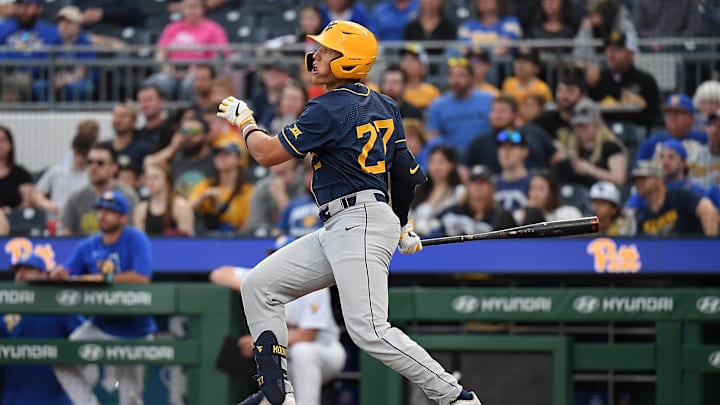The MLB draft is only two weeks away, and the Cardinals are set to make their highest draft selection since 1998. This year's draft class is being described as extremely top-heavy, with around ten great prospects, while the overall depth isn't the strongest. The Cardinals are in a great position to select an elite talent that will inevitably fall into their hands at pick #7.
Firstly, I'd like to throw out a handful of names I would not expect to be available:
No Chance
2B Travis Bazzana, Oregon State: Bazzana had an extraordinary season, slashing .407/.568/.911. Bazzana has one of the most well-rounded offensive skillsets in the draft class. He makes a ton of contact, refuses to chase, hits the ball hard consistently, and has an outstanding feel for hitting the barrel. To put the cherry on top, Bazzana won the 2023 Cape Cod League MVP, proving his ability to hit with wood bats.
When the music starts playing before you start your trot, you know you've hit a tank.
— Tyler Jennings (@TylerJennings24) February 25, 2024
Travis Bazzana got a fastball in his happy zone and did not miss it. 110.9 EV/421 feet. Beautiful swing, just enjoy. pic.twitter.com/berARQGID9
OF/3B Charlie Condon, Georgia: Condon put up video game numbers in 2024, setting an NCAA BBCOR record with 37 home runs while slashing .433/.556/1.009. Condon's carrying tool is undoubtedly his thunderous power, but there's less swing-and-miss in his profile than you would expect, as he whiffed only 19.1% of the time this year. Condon's operation at the plate is also incredible. He has one of the sweetest, most compact swings I've ever seen from a right-handed draft prospect.
Such a smooth, easy and compact swing from Charlie Condon who hammers a 2-run HR way out to LF. Is able to easily generate high-quality impact on a consistent basis, flashing borderline 70 power with a comfortably 60 pure hit tool so far. In the 1:1 convo.pic.twitter.com/cHxnYN1Tlh
— Peter Flaherty III (@PeterGFlaherty) March 6, 2024
Doubtful
RHP Chase Burns, Wake Forest: Burns has some of the loudest stuff in the entire draft class. Burns' arsenal is headlined by a cut-ride fastball that averages 97.8 mph (T100.9) and 20.3" of IVB. While Burns' fastball gets most of the spotlight, I believe his slider is his best offering. The pitch averages 87.5" with great depth (-1.2" IVB) and 8 inches of sweep. Burns throws from a high vertical release, so the pitch plays even better low in the zone with its steep vertical approach angle. Burns also throws a curveball and changeup, and although they had limited usage in college, both grade out well stuff-wise.
Chase Burns vs #2 Clemson
— Wake Forest Baseball Analytics (@Wake_Analytics) May 10, 2024
7 IP
2 H
1 R
16 K😳 (new career high)
1 BB@CleGuardians you’re on the clock ⏰
pic.twitter.com/JBKBsiNv69
1B/LHP Jac Caglianone, Florida: Caglianone is one of the most gifted players in the entire draft class in terms of raw talent. At the dish, he has light-tower power with the ability to make a ton of contact despite chasing nearly 40% of the time. Over the past two seasons for Florida, Caglianone hit a combined 68 home runs. On the mound, he throws a mid-90s fastball with below-average ride and 15" of arm-side run. Caglianone's best pitch results-wise is a 79 mph changeup, which generated a 48.7% whiff rate this season. Caglianone also throws a slider, but the pitch is still a work in progress, sitting at 83 mph with subpar depth.
75TH CAREER HOME RUN @jac_caglianone #MCWS x 🎥 ESPN / @GatorsBB pic.twitter.com/4jXrtfXjfp
— NCAA Baseball (@NCAABaseball) June 19, 2024
